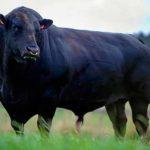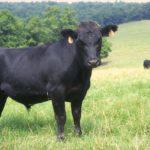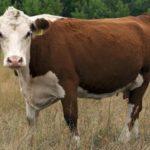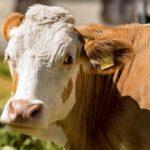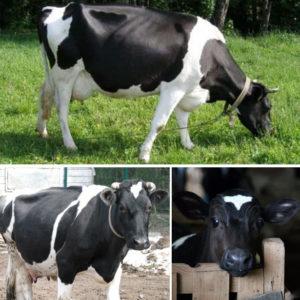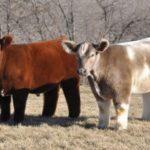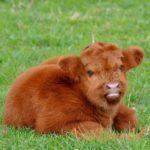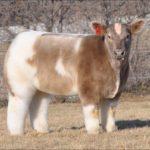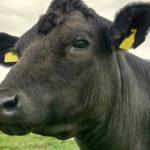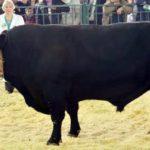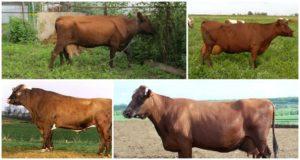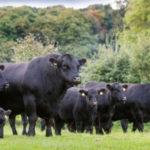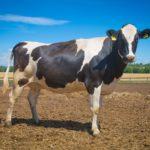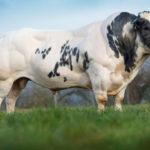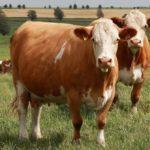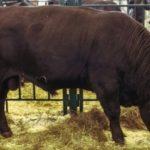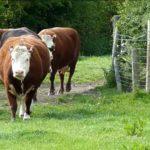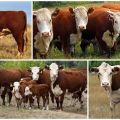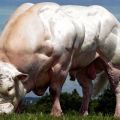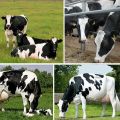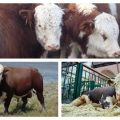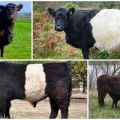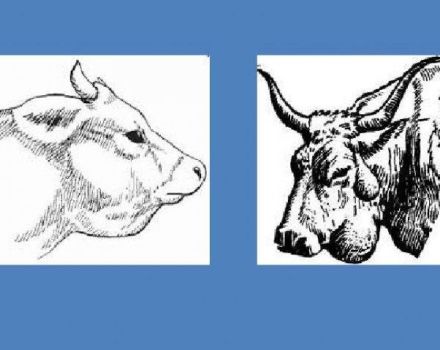Description and characteristics of hornless cows, top-5 breeds and their content
Farmers who are just starting out in cattle breeding assume that all cows have large horns and a large build. Delving into this topic more seriously, breeders begin to get acquainted with different breeds. This is how the first meeting with a hornless hornless cow occurs. This is a unique animal in its appearance. It differs from its relatives and seems more harmless.
What does a hornless cow mean?
The complete absence of horns in livestock, both small and large species, is called "hornless". This word comes from the term "butt", which means the formation of thick growths, resembling cones in shape, formed after the felling of the tree. A similar neoplasm is also present on the head of a hornless cow, which, in principle, is born and develops without horns. There are several reasons for their absence, but typical for this breed is a genetic feature.
Some specimens of animals are purposefully cut off the horns. This fate overtakes cattle, which have problems with behavioral habits. Breeders do a similar manipulation to protect their herd. An animal without horns is safer for its relatives.
The crumbling is the result of the work of breeders. Breeding allows farmers not only to protect other animals from the herd, but also to save money on the absence of the need to cut the horns. In addition, this is an excellent beef breed that gives milk in smaller portions, but it is more appreciated in terms of quality and fat content.
Varieties
Many do not know what kind of hornless cow it is, what its features are, since there are also similarities with ordinary cattle. In fact, this species of animals appeared in Russia at the beginning of the 21st century due to the crossing of the Kalmyk breed with the Aberdeen Angus.
Aberdeen Angus
This type of cow appeared in the 19th century. The animal is actively bred in the USA, Russia. This is a beef breed of cows with characteristic differences. She has:
- black color;
- rounded sides;
- wide massive chest;
- a strongly expanded part of the femur;
- big head;
- thick neck.
An adult male animal weighs 1000 kilograms, but a female individual weighs 650 kilograms.
Redpole
This type of cow originated in 19th century England through the mixing of chestnut and red hornless dairy breeds. If we talk about how much milk a hornless cow gives, then this type allows the farmer to receive about 4,600 liters per year.
Modern cattle are characterized by red color. The weight of a bull reaches 950, and a cow weighs 600 kilograms. The meat of these representatives of cattle retains excellent taste. It is gentle and practically non-greasy.
Hornless cow from Iowa
This type of animal was bred in the USA. A local farmer created an ornamental cow especially to participate in fairs. These hornless animals distinguished themselves not only by the complete absence of horns, but also by the udder. Outwardly, they are similar to plush toys, the same small in size, with thick and soft to the touch wool. The color of the cow may be the most unusual.
Among the features of the breed:
- voluminous coat, due to which the head seems very small in comparison with the body;
- long tail with a tassel at the end;
- small size of the animal;
- short neck;
- back without bends, like a longitudinal line.
Such decorative animals in America cost about 5 thousand dollars.
Russian komola
This domestic type of cattle was bred specifically for maximum meat production. The Russian hornless breed of cows was obtained by mixing Aberdeen Angus and Kalmyk type of cows. This is a successful experiment for breeders. Now the livestock is 8 thousand individuals.
The animal is developing rapidly. Gains its weight constantly throughout life. To cross a young, hornless bull with a dairy-type cow, its weight must be no more than 1200 kilograms. It must be a robust animal. The first calving of a hornless cow will appear in 2 years.
The Russian hornless breed is characterized by:
- wide chest;
- strong straight legs;
- elastic skin;
- the strength of the physique;
- black color;
- wide back;
- large body;
- head of medium size.
Hornless animals are small. From the outside, they are more like a barrel. Cows are considered adults if they are 15 months old.
This breed gives offspring for 10-11 years. At the same time, the cow has little milk. It only suffices for feeding young animals. The fat content of milk is 5%. Newborns are born with a weight of no more than 40 kilograms, but they are gaining it at an active pace, about 1 kilogram per day. Therefore, calves often weigh 80-85 kilograms by 3 months. Animals rarely get sick. Excellent adaptability to living conditions. The hornless cow has advantages over its relatives.
East Finnish
This is a dairy breed. For 1 day, she gives up to 7 liters with a milk fat content of 5%. The East Finnish cow constantly needs fresh and juicy grass. This rule is important to adhere to if the farmer wants to get good milk yield.A warm barn is built for the hornless cow. Make sure that in winter the air temperature does not fall below 7 degrees Celsius.
Among the features of the cow:
- body weight - 500 for a cow, 700 kilograms for a bull;
- there is an udder that is well developed and looks like a bath;
- light brown coat color, sometimes with white spots on the belly.
A hornless cow provides an excellent opportunity for a farmer to develop his own business for the sale of high-quality and fatty milk.
Advantages and disadvantages
Hornless breeds do not pose a trauma hazard to the herd. Many of them are completely unpretentious in their care. All they need is a stall. But you can do without it. In the diet, animals of hornless breeds are unpretentious and need only a large amount of grass. If it is absent sufficiently, then other types of food can be dispensed with. Hornless cows are stress-resistant. They are not afraid of a change of owner or bad weather.
On the downside, hornless cow breeds are unable to defend against cattle or predators. The lack of horns on the female seems less attractive to the bull, therefore it is more difficult for them to compete with other representatives of the herd.
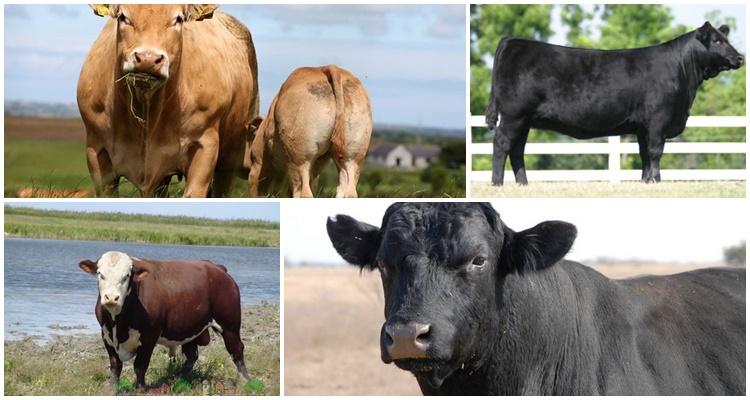
Conditions of detention
Animals of this species do not need additional care. They can live in a stall or without it. Travel long distances, if necessary. Live outside when it's warm. The breeder should remember that when dealing with hornless cows, it is necessary to monitor their proper nutrition, hygiene and regularly visit the veterinarian, according to the schedule.
Livestock should be washed regularly, especially the trunk and hooves. For this, use special brushes. Acceptable water temperature is 17 degrees.
Nutrition
The animal adapts to different foods. Changing feed will not harm him in any way. Artificial feeding can be added to grass and hay, for example, compound feed. At the same time, grazing of hornless breed lasts about 10 months per year.
It is important not to forget about the drinking water regime. An adult, like a young, cannot be without it for a long time.
Diseases and prevention
To prevent the onset of disease, you need to regularly visit your veterinarian. In these animals, the most common diseases are associated with the lungs and the esophagus. Hornless cows have bronchitis. They happen due to drafts, cold, untimely replacement of litter, moisture in the barn.
If artificial additives are poorly ground, then the animal may have a blockage of the esophagus. This condition is characterized by overexcitation of the animal, foam at the mouth. You will need immediate veterinary assistance.
Infectious diseases are prevented: a blood test and a number of necessary vaccinations are done. Horny cows produce excellent meat and milk. To get healthy food after slaughter, you must adhere to the rules of keeping animals and observe the diet.
